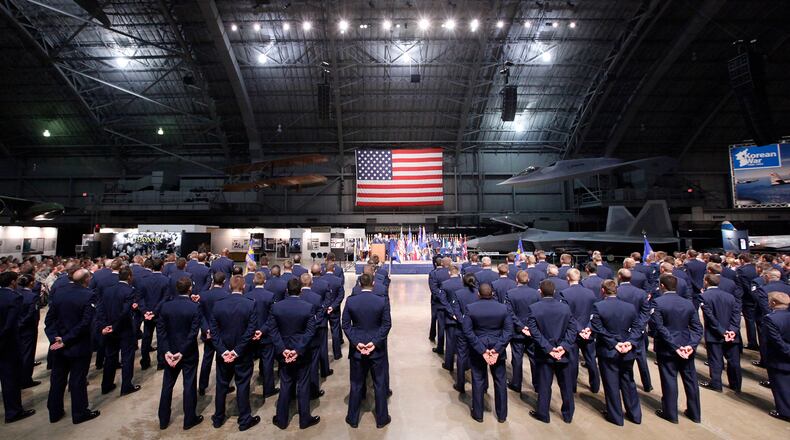In September 2018, the House approved the first installment of the $182 million in funding in the National Defense Authorization Act of Fiscal Year 2019.
The legislation also approves $1.62 billion to support research and development programs run out of Wright-Patterson’s Air Force Research Lab and $35.7 million to support improvements and rehabilitation efforts for Wright-Patterson’s historic Brick Quarters Housing District.
RELATED: Springfield Air Guard wing aims for Space Force mission
Creates Space Force
The legislation also creates a “chief of space operations” for Space Force, a force which would be under the Air Force. The new chief would report to the Air Force secretary and would be a member of the Joint Chiefs of Staff, according to national reports.
Springfield Air Guard wing aims for Space Force missionLeaders of the Ohio Air National Guard 178th Wing based in Springfield have said they have been approached by national authorities about having a role in a new Space Force.
“Space is the world's new war-fighting domain,” Trump said Friday during a signing ceremony at Joint Base Andrews just outside Washington. “Among grave threats to our national security, American superiority in space is absolutely vital. And we're leading, but we're not leading by enough, and very shortly we’ll be leading by a lot."
In a report last February, the Pentagon asserted that China and Russia have embarked on major efforts to develop technologies that could allow them to disrupt or destroy American and allied satellites in a crisis or conflict.
“The United States faces serious and growing challenges to its freedom to operate in space,” the report said.
When he publicly directed the Pentagon in June 2018 to begin working toward a Space Force, Trump spoke of the military space mission as part of a broader vision of achieving American dominance in space.
Instead of being its own military department, like the Navy, Army and Air Force, the Space Force will be administered by the Secretary of the Air Force. The law requires that the four-star general who will lead Space Force, with the title of Chief of Space Operations, will be a member of the Joint Chiefs of Staff, but not in Space Force's first year.
Trump said its leader will be Air Force Gen. John W. Raymond, the commander of U.S. Space Command.
Space Force is the first new military service since the Air Force was spun off from the Army in 1947. Space Force will be the provider of forces to U.S. Space Command, a separate organization established earlier this year as the overseer of the military's space operations.
Space Force will be tiny, compared to its sister services. It will initially have about 200 people and a first-year budget of $40 million.
The Pentagon spends about $14 billion a year on space operations, most of which is in the Air Force budget.
12 weeks of parental leave for federal workers
The legislation Trump signed also gives the federal government’s 2.1 million employees paid parental leave for the first time.
The benefit, which gives 12 weeks of paid leave to mothers and fathers of newborns, newly adopted children or foster children.
The new policy aligns the federal government with many of the country’s most powerful companies, which have been leading the charge in aggressively expanding parental leave benefits. It also could set a high standard for other employers, both because of the length of time offered and because the policy would apply to all new parents, not just birth mothers.
Signing avoids shutdown
The existing stopgap funding law was set to expire at midnight Eastern time.
Unlike the 35-day shutdown that ended in January, another lapse would have affected every federal agency.
The 12 spending bills for the fiscal year ending Sept. 30, 2020, were bundled into two separate packages, one carrying security-related measures and another containing domestic programs and foreign aid as well as a collection of tax breaks, health care legislation and more.
Congress will have about a month off from budget and appropriations before early February when the Trump administration sends its fiscal 2021 budget request to Capitol Hill and the entire process begins anew.
Jennifer Shutt of CQ-Roll Call and The Associated Press contributed to this report.
PHOTO (for help with images, contact 312-222-4194): CONGRESS-SPENDING
About the Author

